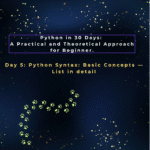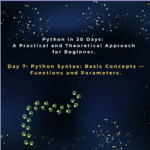Introduction
Welcome to Day 6! Yesterday, you mastered the fundamentals of creating and modifying Python lists
. Today, we’ll go a step further and explore some more powerful and common Python list operations that you’ll use frequently as you write more complex code. These advanced techniques will make your code more efficient and elegant.
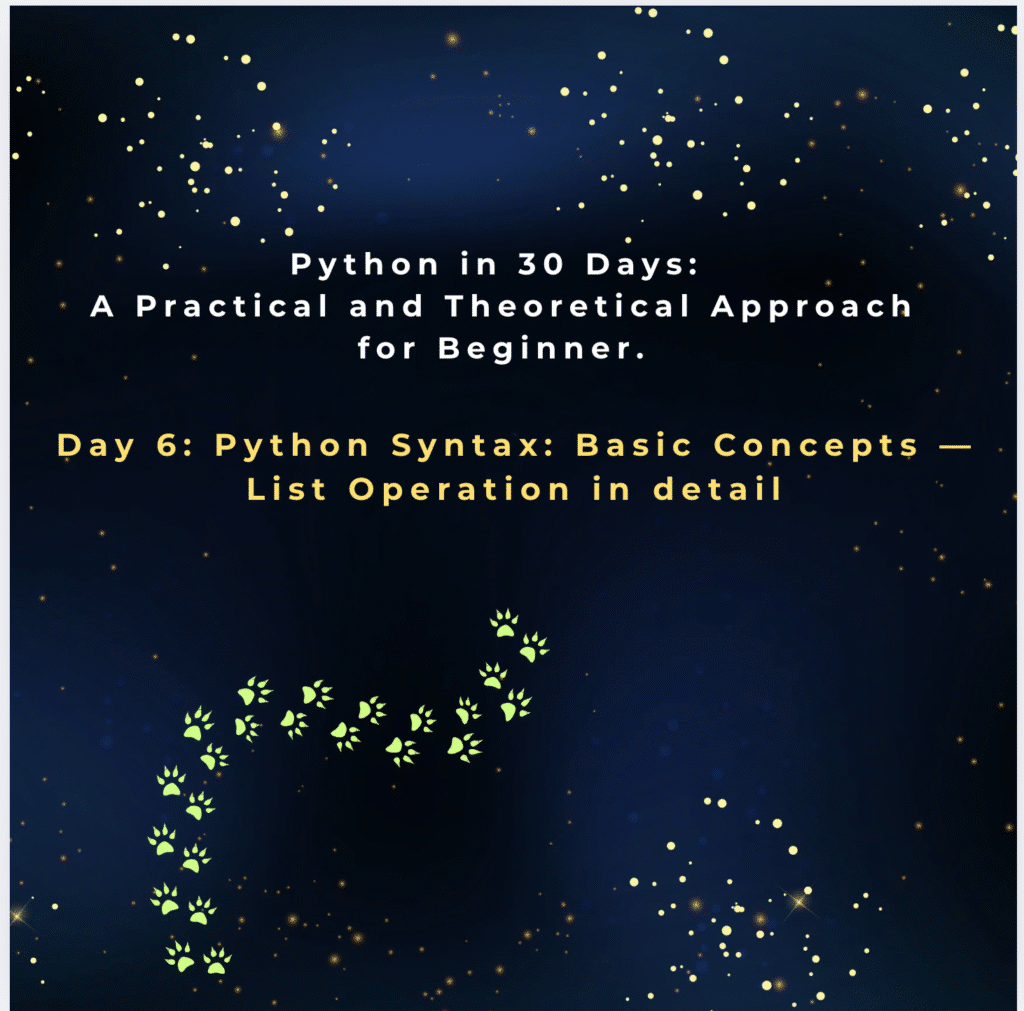
List Concatenation and Repetition
Just like with strings, you can combine and repeat lists using simple arithmetic operators. These Python list operations create a new list without modifying the originals.
Concatenation
You can merge two or more lists into a single, new list using the + operator.
Pythonlist1 = [1, 2, 3]
list2 = [4, 5, 6]
combined_list = list1 + list2
print(combined_list) # Output: [1, 2, 3, 4, 5, 6]
While this is a straightforward way to combine lists, it’s important to note that a new list is created each time. For a large number of concatenations, it can be more efficient to use a method like extend(), or build the list from a list comprehension.
Repetition
You can create a new list by repeating an existing list a specified number of times using the * operator.
Pythonrepeated_list = ["a", "b"] * 3
print(repeated_list) # Output: ['a', 'b', 'a', 'b', 'a', 'b']
A key detail to remember is that this creates a list containing multiple references to the same objects. This has important implications if the list contains mutable objects.
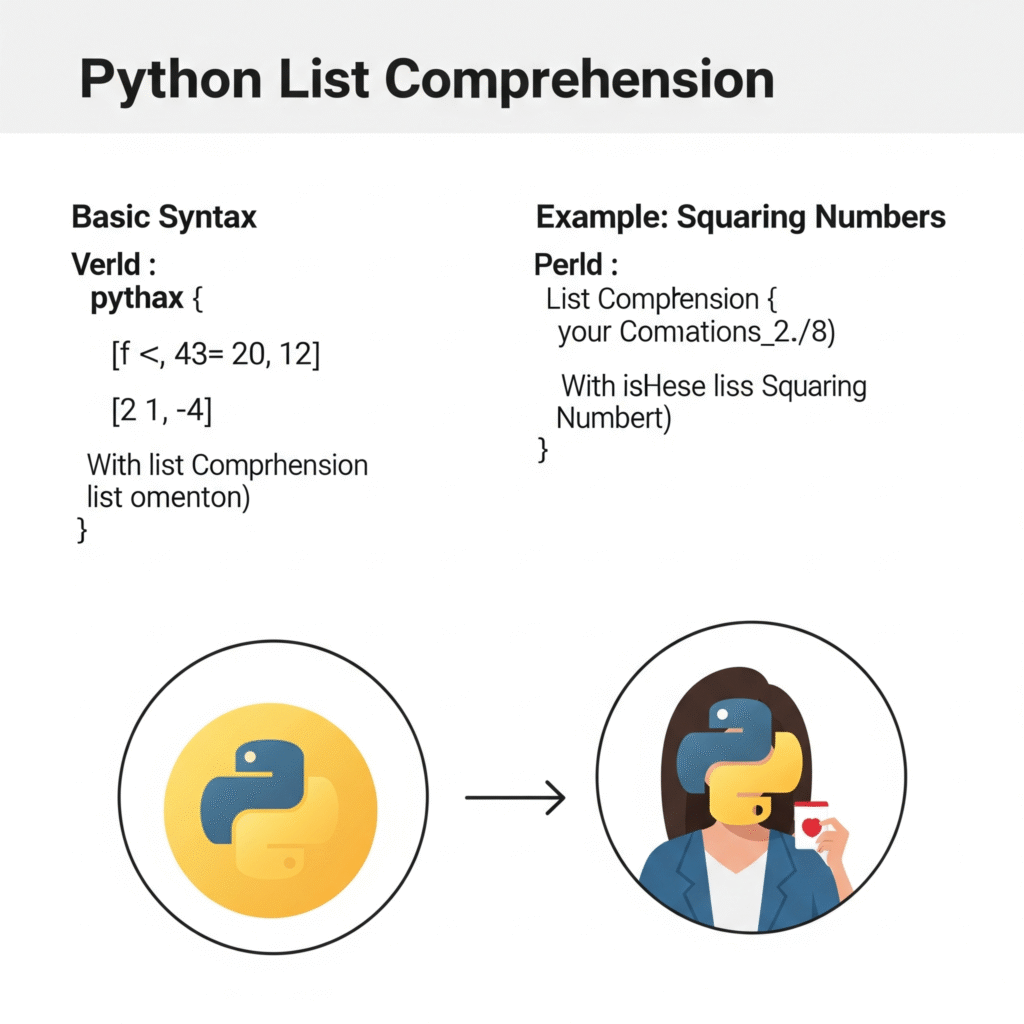
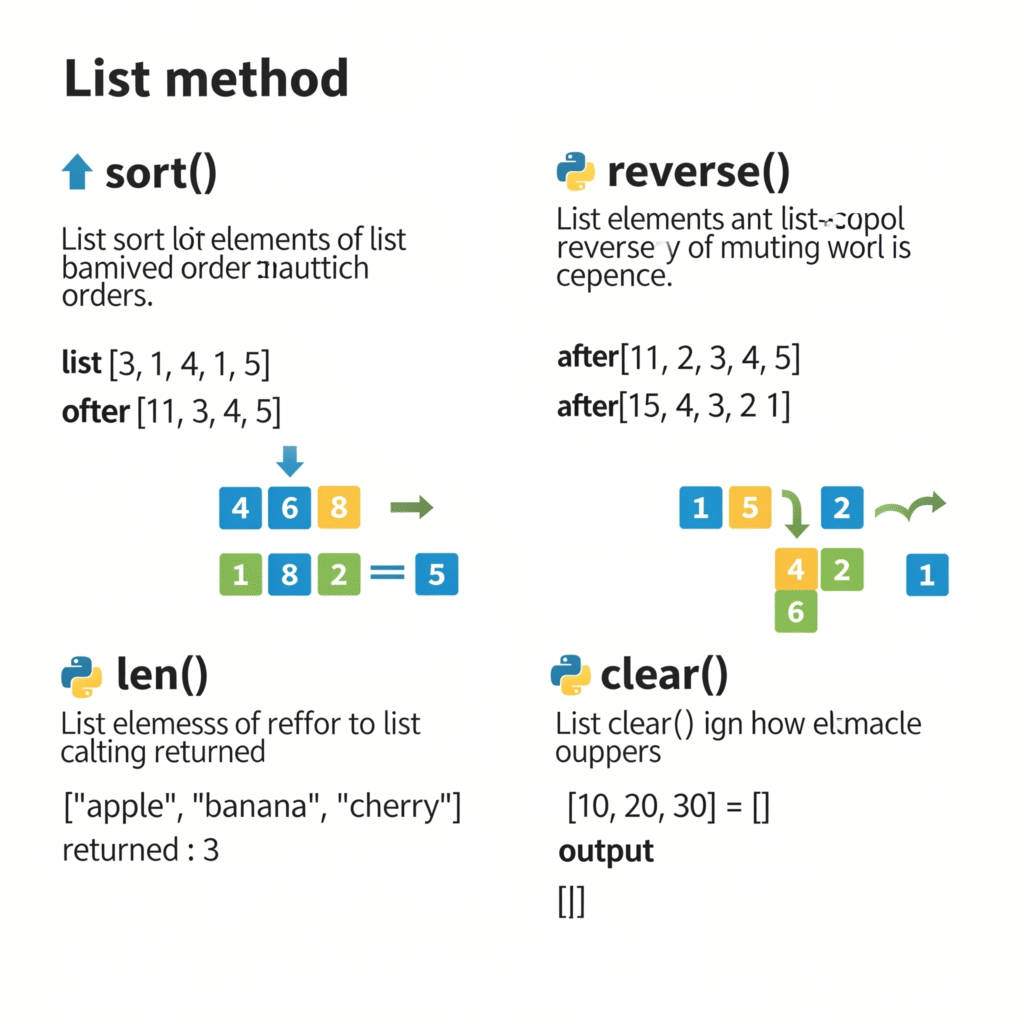
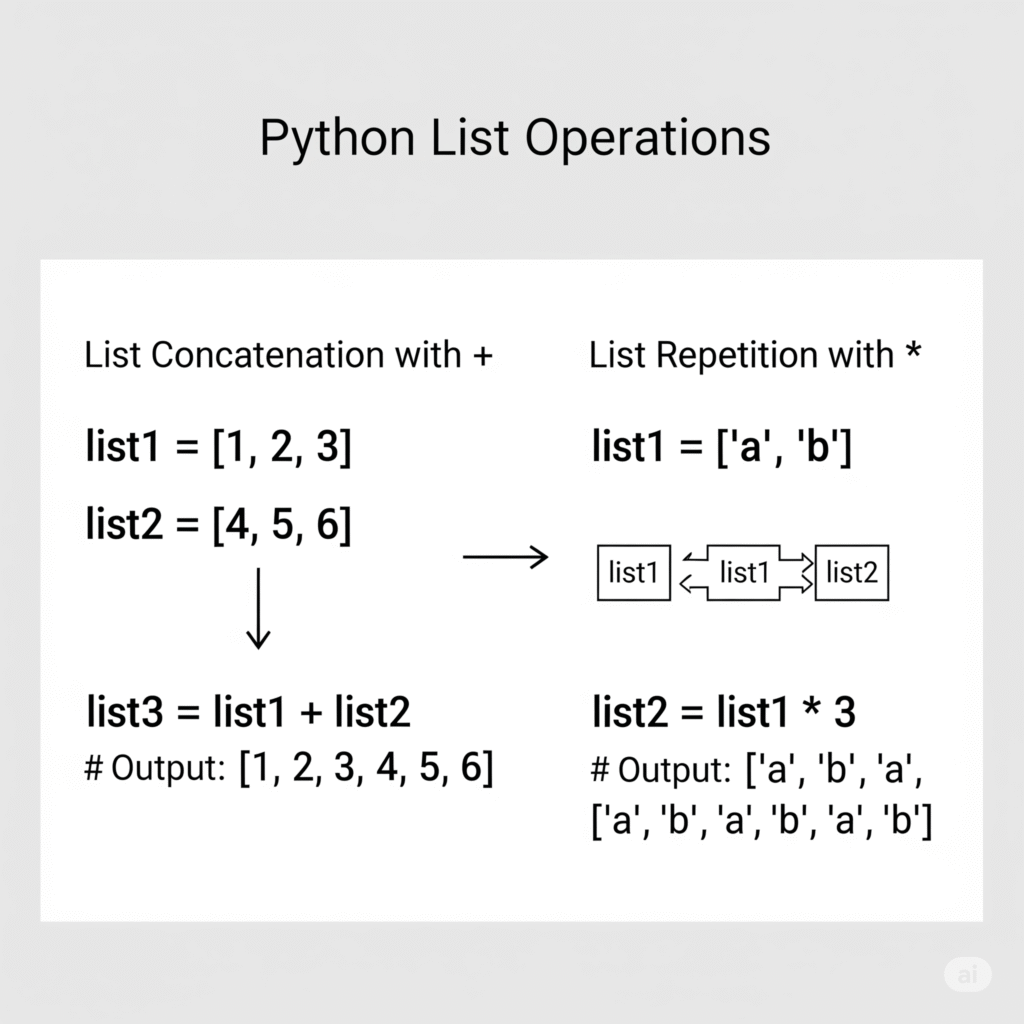
List Comprehension: A Concise Way to Create Lists
List comprehension is a concise and elegant way to create lists. It is one of the most powerful Python list operations. It allows you to build a new list by iterating through a sequence, applying an expression, and optionally including a condition, all in a single line of code. This powerful feature makes your code more readable and efficient than a traditional for loop.
The basic syntax is [expression for item in iterable if condition].
Python# A simple example: creating a list of squares
squares = [x**2 for x in range(5)]
print(squares)
# Output: [0, 1, 4, 9, 16]
# Another example with a condition: finding even numbers
even_numbers = [x for x in range(10) if x % 2 == 0]
print(even_numbers)
# Output: [0, 2, 4, 6, 8]
# A third example: modifying strings in a list
fruits = ["apple", "banana", "cherry"]
capitalized_fruits = [fruit.capitalize() for fruit in fruits]
print(capitalized_fruits)
# Output: ['Apple', 'Banana', 'Cherry']
For more details, you can refer to the official Python tutorial on list comprehensions.
Nested Lists: Lists Within Lists
A nested list in Python is a list that contains other lists as its elements. This allows you to create more complex data structures, similar to a grid or a matrix. Working with nested lists is a common Python list operation for handling two-dimensional data.
To access an element within a nested list, you use a second set of square brackets for the inner list’s index.
Pythonnested_list = [[1, 2], [3, 4], [5, 6]]
# Accessing the first inner list
print(nested_list[0]) # Output: [1, 2]
# Accessing the second element of the first inner list
print(nested_list[0][1]) # Output: 2
# A 3x3 matrix as a nested list
matrix = [
[1, 2, 3],
[4, 5, 6],
[7, 8, 9]
]
# Accessing the middle element (row 1, column 1)
print(matrix[1][1]) # Output: 5
Common List Methods
Beyond the append(), insert(), and remove() methods you learned yesterday, there are several other built-in Python list methods that are essential for manipulating data. You can find a complete list in the official Python documentation.
sort() and reverse()
sort(): Sorts the items in the list in place, either numerically or alphabetically. You can use the reverse=True parameter to sort in descending order.
Pythonnumbers = [5, 2, 8, 1, 4]
numbers.sort()
print(numbers) # Output: [1, 2, 4, 5, 8]
reverse(): Reverses the order of the items in the list in place.
Pythonfruits = ["apple", "banana", "cherry"]
fruits.reverse()
print(fruits) # Output: ['cherry', 'banana', 'apple']
clear() and copy()
clear(): Removes all items from the list, making it empty.
Pythonmy_list = [1, 2, 3]
my_list.clear()
print(my_list) # Output: []
copy(): Returns a shallow copy of the list. This is crucial for avoiding unintended side effects when modifying lists.
Pythonoriginal_list = [1, 2, 3]
new_list = original_list.copy()
new_list.append(4)
print(original_list) # Output: [1, 2, 3]
print(new_list) # Output: [1, 2, 3, 4]
Summary
Today you took your knowledge of lists to the next level by learning about advanced Python list operations:
- Concatenation and Repetition to combine and duplicate lists.
- List Comprehension to create lists in a concise and efficient way.
- Nested Lists for handling more complex data structures like grids.
- Several common list methods like
sort(),reverse(), andclear().
Mastering these powerful techniques is a crucial step toward writing more efficient and readable Python code.
The journey of learning what Python is is an exciting one, and this “30 Days of Python” series is designed to be your roadmap. Happy coding!

The Rise of AI Companions: Are Virtual Friends Replacing Real Ones?
Introduction As…
Neuromorphic Chips: Mimicking the Brain to Supercharge AI
Introduction Artificial…
Space Tourism in 2025: From Dream to Reality
Introduction For…
How to Build Your First AI App (No Experience Needed!)
“You don’t…
Step-by-Step Coding Guide for Absolute Beginners (with AI Help)
🟢 Step…
Getting Started with AI-Powered Coding (Even If You’re New!)
In 2025,…







